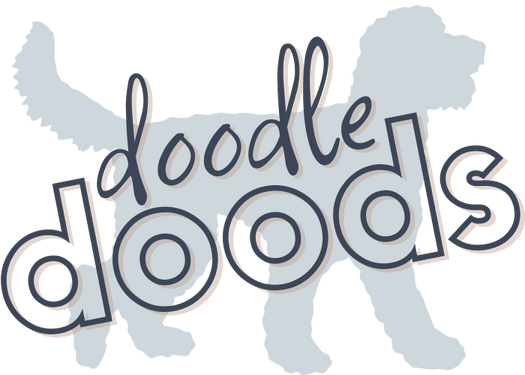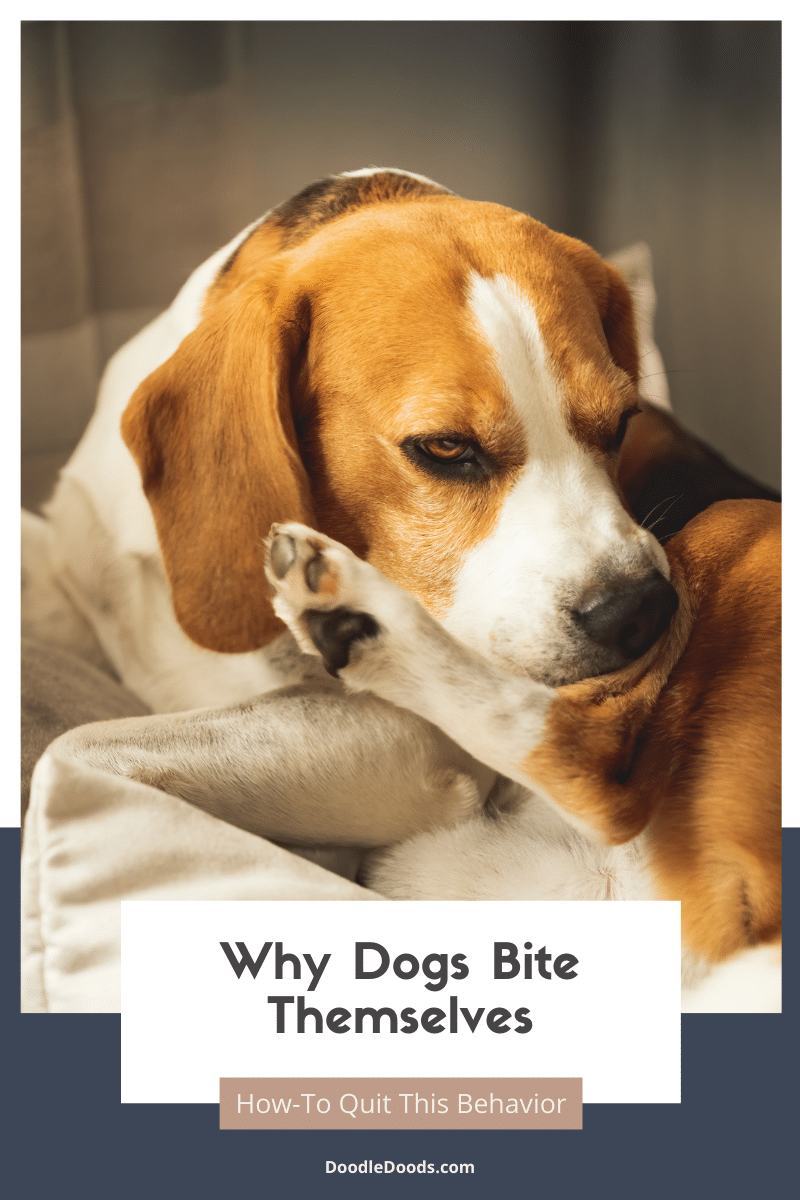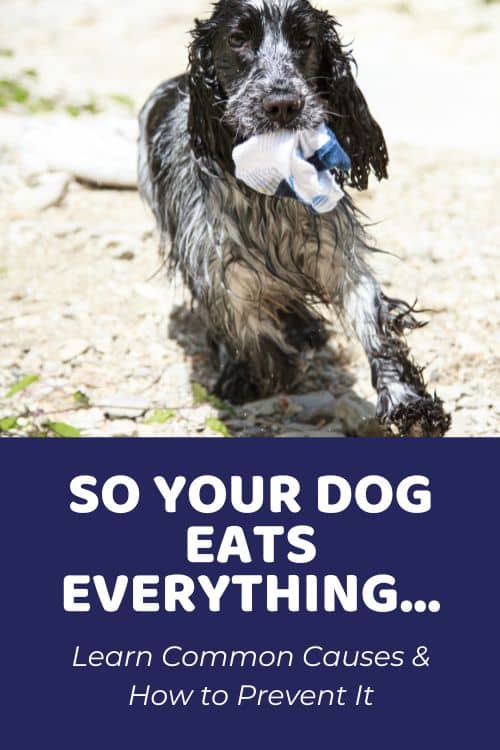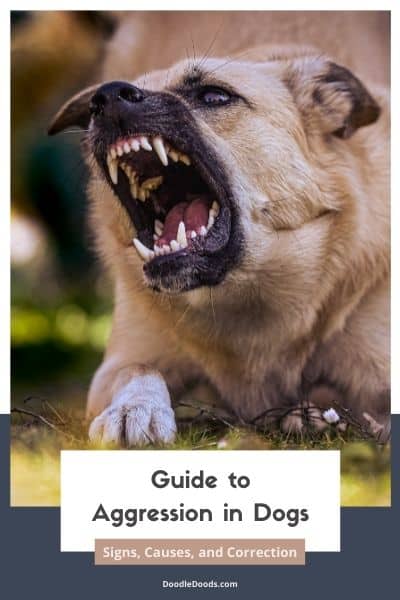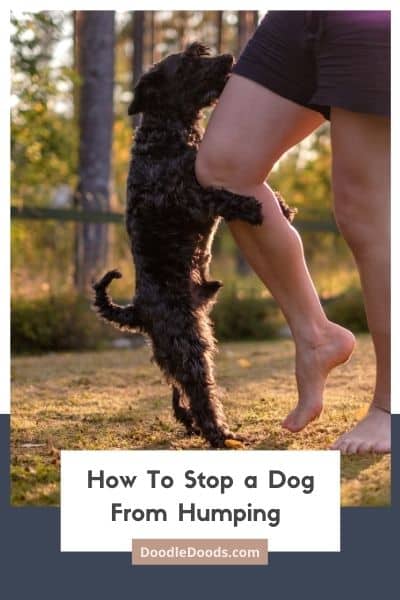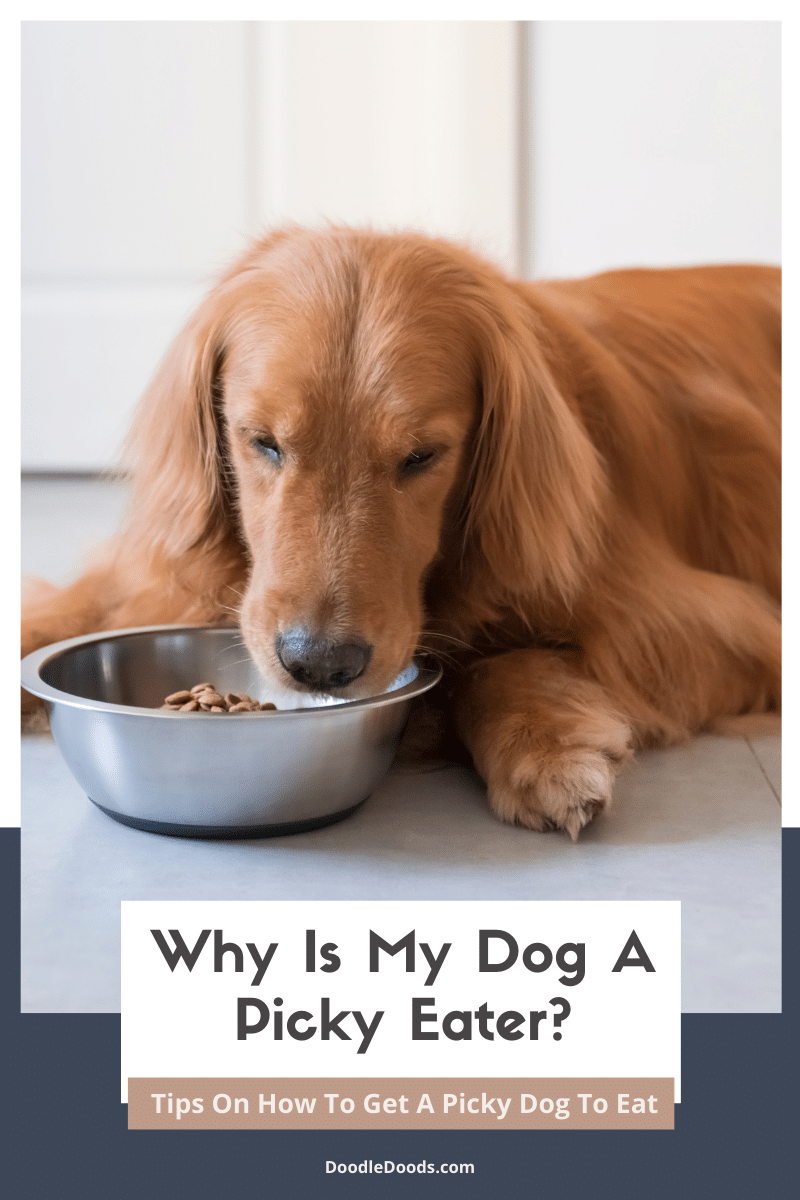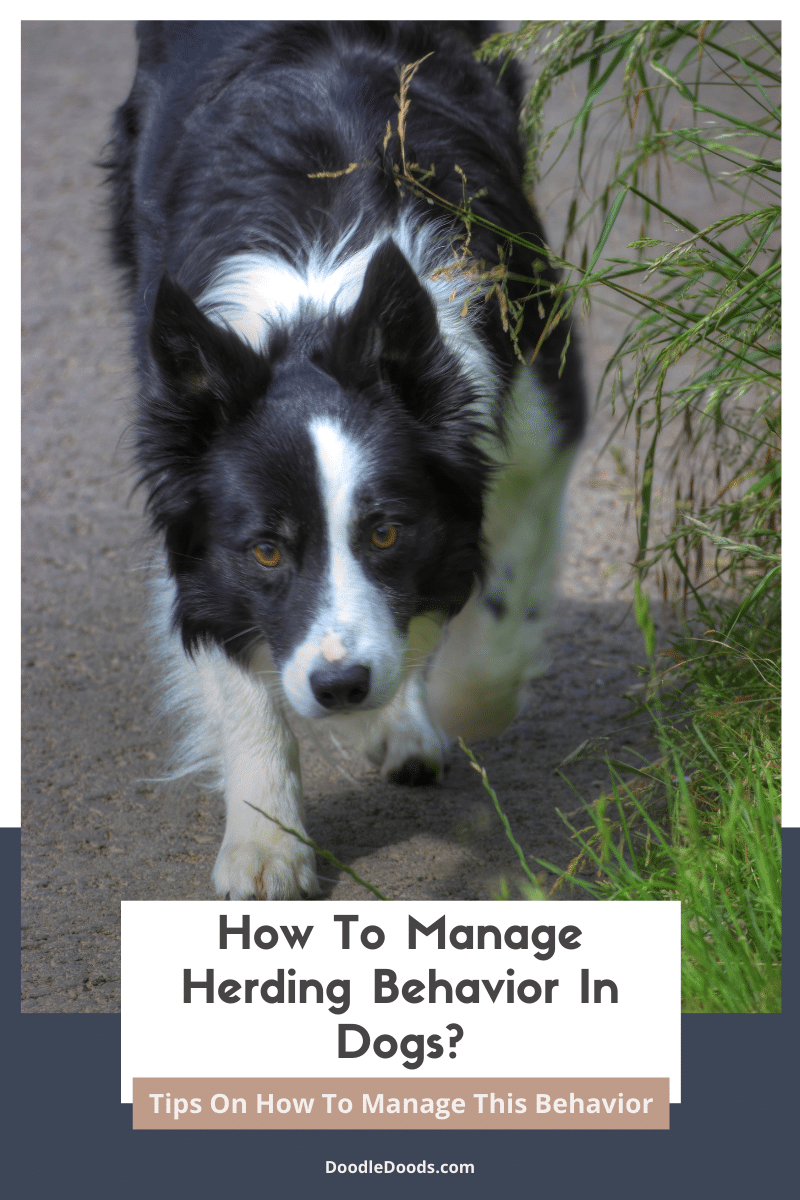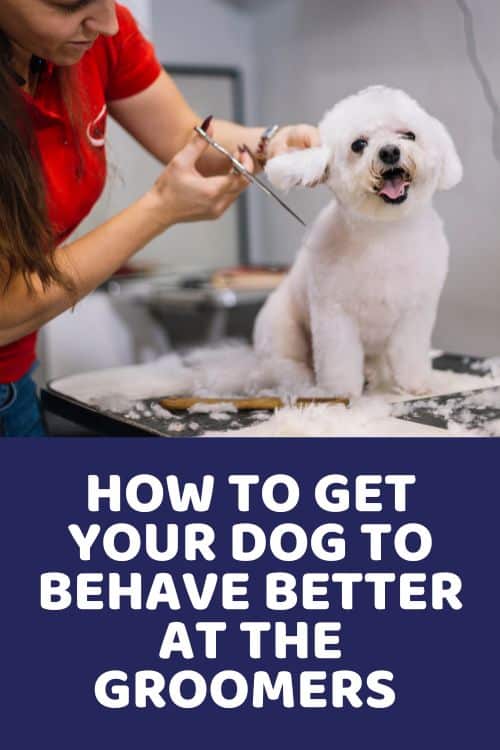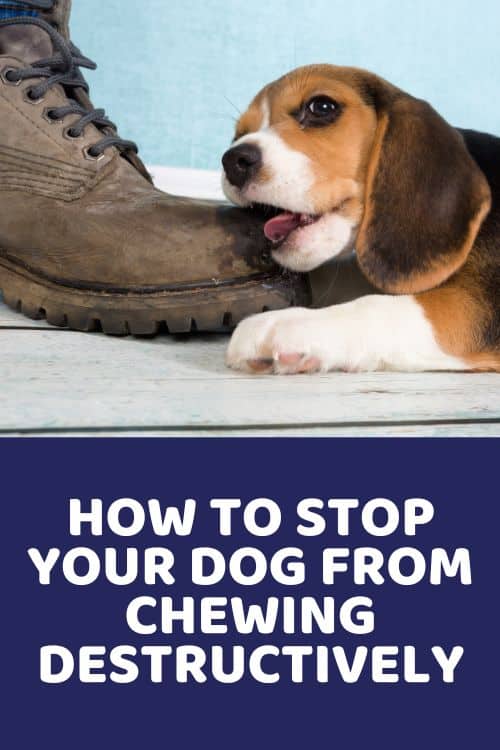Unlike us, our pets don’t have super mobile fingers perfect for scratching away that irritating itch. So usually, they have to resort to using teeth. Chances are you will have noticed your pup biting at their skin, licking their paws, rear end, and (umm) other areas of themselves. You may also have seen them having a good old itch at their ears with their back legs from time to time. None of these are cause for concern… Until that is, the actions become frantic or near constant. If you’ve observed your Doodle worrying at a particular area of their body often and you’re concerned about what might be bringing about this behavior or about any of the potential negative consequences of it, then you’ve come to the right place. Here we’ll tackle the issue of why dogs bite themselves and explain what you can do about it.
Table of Contents
- Top Causes Of Why Dogs Bite Themselves
- Eliminating The Unwanted Behavior
- Dealing With Canine Compulsive Disorder
- Frequently Asked Questions About Why Dogs Bite Themselves
- Final Thoughts
Top Causes Of Why Dogs Bite Themselves
This list of why dogs bite at themselves is by no means exhaustive. It’s just here to give you an idea of a few things to look for. As ever, when it comes to your pet, a vet is your best source of information.
Fleas & Parasites
Naturally, fleas are the top culprit for why dogs bite at themselves, and likely the one your mind immediately leaped to. If you’re an old hand in the pet-owning business, you will have encountered these pesky parasites before. They are not always quite as easy to spot as you might think! They love to hide out in warm spaces, so be sure to check behind your hound’s ears, around their tail, and on their belly and armpits for the presence of the bugs themselves or for the teeny reddish-black specs of “flea dirt” they leave behind.
Alternatively, your pup’s scratching problem may indicate that they have picked up a tick or two on your last walk in the park. Far ickier than fleas, these potentially harmful arachnids can also cause severe itching due to the presence of a chemical in their saliva that numbs the area and allows them to feed without your pet noticing (at first, at least!) And, as with fleas, where there is one, there is likely to be more. So if you do spot this beasty where your dog is scratching, be sure to check the rest of them over carefully too.
Skin Infections
If you’ve ruled out this first explanation but notice when you check your pal’s biting spot that their skin is red, inflamed, and maybe even giving off a little more heat than you might expect (or even a strange odor), then there could be a slightly more troubling issue behind the irritation. Bacteria and fungal skin infections are both conditions that require some kind of medical treatment. That being said, these are reasonably common in canines and can generally be quickly and easily dealt with once you are aware of their presence.
As well as redness, swelling, itchiness, heat, and odor, other common signs of skin problems in dogs include dry, flaky, or thickened skin, hyperpigmentation, crusty, pus-filled lesions, hair loss, and signs of pain (for instance, your dog might not want you going anywhere near the area in question). As infections have different causes (disease, deficiencies, allergies, injury…), you need to know what underlies the problem before beginning treatment. That’s why it’s best to get your pet checked out by a vet.
Dry, Irritated Skin
Now, before jumping to any conclusions about infections and rushing your pet off to the clinic for potentially unnecessary treatments, you might consider that the issue is no more complicated than just a general case of itchy, irritated, flaky skin. This happens, and especially so in more extreme climates (cold and wind can be very drying – as can intense sun). Other environmental factors can also negatively affect your dog’s skin, including frequent contact with salt water, mud, and dirt, pollen, grass, dust, and dust mites.
You might even be inadvertently causing the condition yourself by bathing your four-legged friend more often than you should be – or using the wrong kinds of products on them. Baths can be very drying for your hound as they tend to strip their coat and skin of the natural oils created to protect it. You’ll be exacerbating the issue if you’re using a low-quality shampoo or even (gasp) a human one! Dog skin is delicate and slightly alkaline and differs considerably from ours. Finding the right shampoo can make all the difference.
Pain & Discomfort
Another potential problem that could be causing excessive licking is pain or discomfort (usually caused by inflammation of the joints). This is seen a lot more frequently, as you might expect, in senior dogs. While you might not notice anything specifically wrong with the area of your pet’s attention, it will likely be around their hips and rear. You’ll also see other signals that indicate inflammation, including issues with movement and stiffness, and your dog will likely be highly reluctant to let you touch them in their problem spot.
While this may underpin the problem for your older pet, a younger one may have pain in other areas due to other issues but act in a similar way. They might have picked up a thorn or some other injury while out on a walk – this will be pretty easy to spot. However, they could also be having internal problems that are causing them discomfort. Licking in dogs is often used as a comfort behavior. They will do it to reduce their hurting, help with healing, and to self-soothe. All you can do in this situation is take your pup to the vet.
Anxiety & Boredom
Now if you can’t see any signs of anything at all (except maybe minor redness caused by the biting or licking itself), that’s where things can get really frustrating. The noise of your pooch licking and biting will drive you to distraction, but you’ll feel completely helpless to do anything. If you have completely ruled out a medical problem being at the root of the behavior, it’s time to consider that the issue might well be psychological. Canine Compulsive Disorder (CCD) is increasingly common, but it’s not as scary as it sounds!
CCD, put simply, refers to something that dogs do repetitively to the point of which it actively interferes with their lives. Biting and licking are among these behaviors. But why are they doing it in the first place? Well, the compulsion is usually linked to an issue with their lifestyle whereby your dog is feeling stressed, anxious, frustrated, bored, or some other negative emotion to excess. In this way, it can be linked to separation anxiety if your pet is left home alone for long periods or to them simply not getting enough stimulation.
Eliminating The Unwanted Behavior
Now to get down to the real nitty gritty of stopping your hound from sending you around the twist with all their bite, bite biting and/or lick, lick licking! Depending on what lies behind this frantic or compulsive behavior, you may want to look into doing one or more of the following in order to address it:
Eradicating Fleas & Parasites
The first and most obvious solution (if pests are at the root of the issue, of course) is to get rid of those irritating skin invaders once and for all. Flea and tick prevention for Doodles is a pretty straightforward process, and there are an array of treatment options to choose from, including collars, spot treatments, chewables, and tablets. If you opt for topical treatments and shampoos, be aware that harsh chemicals might not be best for sensitive skin, so you may well just end up substituting one problem for another here.
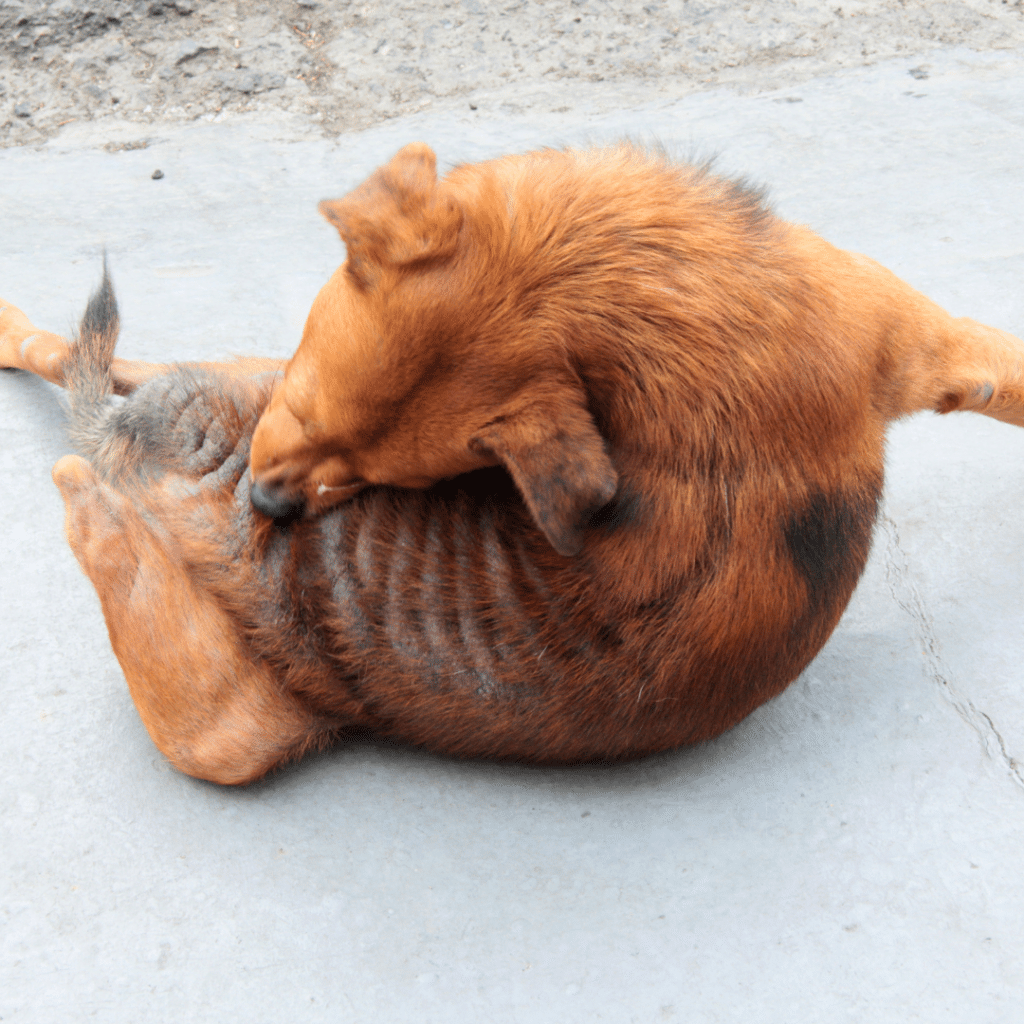
Checking For Sensitivities
If you suspect that your pal’s dry, flaky, and irritated, or red, swollen, and hot skin might be caused by something in their environment – an allergy to pollen or dust, for instance, then you’re going to have to work a little harder to identify the cause. Keep careful note of when itchy flare-ups are triggered. You might notice them more after a trip to the park, when your pup’s been for a swim, on cleaning day… etc. Dealing with this is a simple case of keeping your pet’s coat clean. Waterless shampoos and wipes can really help.
Providing The Right Nutrition
As bizarre as it may sound, skin disorders can actually be triggered by issues with diet. Adverse reactions to specific ingredients in their kibble can lead to Canine Atopic Dermatitis. This is an inflammatory, chronic skin disease that’s specifically linked to allergies. Common culprits are chicken, eggs, and grains such as rice, corn, oats, barley, and wheat. It might also be that your pup is missing nutrients from their diet, like omega fatty acids. Switching to a ‘sensitive’ food formula will be your best course of action here.
Soothing & Nourishing The Skin
When the elements are to blame – harsh, cold winters or hot, dry summers – you may notice your mutt sheds more than you’re used to. This is a side effect of dry, damaged skin and unhealthy coat. Introduce moisture back into both with the right products. Pet parents love shampoos specifically aimed at reducing shedding (even when their Dood isn’t usually a shedder) because these do all the right things, including softening, soothing and nourishing, thanks to nutrients like fatty acids, B vitamins, vitamin E, and zinc.
Discouraging Compulsive Licking
With most of the physical causes of why dogs bite at themselves, the above will have you covered. However, when it comes to emotional factors, you’ll have to deep dive into your pet’s routine to figure out what’s occurring. Questions to ask yourself include: are you exercising your dog enough? Are you leaving them alone too long during the day? Do they have enough toys to keep them occupied? Doodles tend to be super smart pups and need a little more physical and mental stimulation than many other breeds.
Booking A Vet Appointment
Remember that a final causal factor for why dogs bite themselves could be pain and discomfort. The presence of either of these may not always be as obvious as you think. That’s why if you’re really struggling to get to the heart of the matter – whether or not you believe the actions are caused by something else on the list – you really should book an appointment with the vet. Ruling out medical reasons for the behavior will put your mind at ease, and you can get more specific advice on your pup.
Dealing With Canine Compulsive Disorder
As we touched on above, CCD is a type of obsessive-compulsive disorder in dogs whereby they start behaving in a way very unlike how they were before. While licking and biting can be part of this, other repetitive behaviors seen in dogs include tail chasing, flank sucking, and freezing with no apparent cause for the action. Like the human version of this disorder, understanding it can be complicated, and treatment options may include medication. However, environmental adaptations and training are a good place to start.
Upping exercise and games while reducing stress are typically prescribed techniques for starting down the road to eliminating these actions. While doing this, you’re going to want to ensure you’re not reinforcing them by providing any rewards, such as your attention. A well-rounded routine can often eliminate the negative emotions that are prompting the self-soothing response, and you might start to see an improvement right away. Add training to the mix, as well as toys and play, and your overall relationship will improve too.
In terms of stress, fear, and anxiety, you might need to take a little time to understand what is triggering the response. From there, you’ll have to work on desensitizing your hound to this stimulus and counter-conditioning them to behave in a different, more desirable way. That sounds very complicated, but it really doesn’t have to be. There are plenty of tried and true techniques that can effectively do this. You’ll just need to do a little research into the methods and be calm and patient in waiting for things to change.
Frequently Asked Questions About Why Dogs Bite Themselves
There are many reasons why dogs bite at themselves. It could be to do with skin issues, inflammation, pain, or discomfort. It may even be linked to certain psychological conditions. You’ll need to look for other clues and symptoms to determine what it might be and how you can prevent them from doing it.
Depending on which part of their leg your hound is biting at, the problem here could be to do with injury (something sharp in the paw or a cut or brushed caused by walking over rocks), irritation (knots or debris caught up in their hair that is scratching or pulling at the skin), or a painful swelling of the joints known as arthritis – commonly seen in older dogs.
Before dispensing the chemical treatments to your pup all willy-nilly, you’re going to want to be clear on exactly what the problem you’re dealing with is. If you determine fleas or ticks to be the issue, a suitable topical treatment can be fine. However, with skin infections – bacteria or fungal you’ll want to consult with your vet about what to use first.
One of the biggest factors in overly dry dog skin is their owners bathing them too frequently – or using unsuitable products when doing so. While it might be tempting to pop your muddy or stinky pooch in the tub as often as possible to keep your house clean and smelling good, it’s better to stick to doing this once a month and using wipes in between.
When it comes to problems of the rear end, you might often find that something caught up in your pet’s coat or that was caught up in your pet’s coat and damaged their skin is to blame. Otherwise, knots, tangles, and matting can lead to this issue. This area of your pet tends to be among the most shaggy, and frequent grooming and trimming can help.
Final Thoughts
The difficulty of something being wrong with your dog is that they can’t tell you what’s going on. This is certainly the case for why dogs bite themselves. As a pet parent, you need to be very observant and have a fair bit of knowledge of the more common canine complaints at your fingertips. This can be tricky when you’re a newbie owner or suddenly dealing with a very different breed from before.
With biting, scratching, and licking at hair or skin, it really doesn’t have to be the end of the world. Your dog may just have a random itch, or it could be something a little more serious than that. In terms of the latter, most things that do come up are highly treatable either at home or with the help of your friendly local vet. Either way, hopefully, the information included in this article about random biting and licking has been able to put your mind at ease and enabled you to do something to help your pup feel better.
Learn How to Care for Your Doodle Puppy!
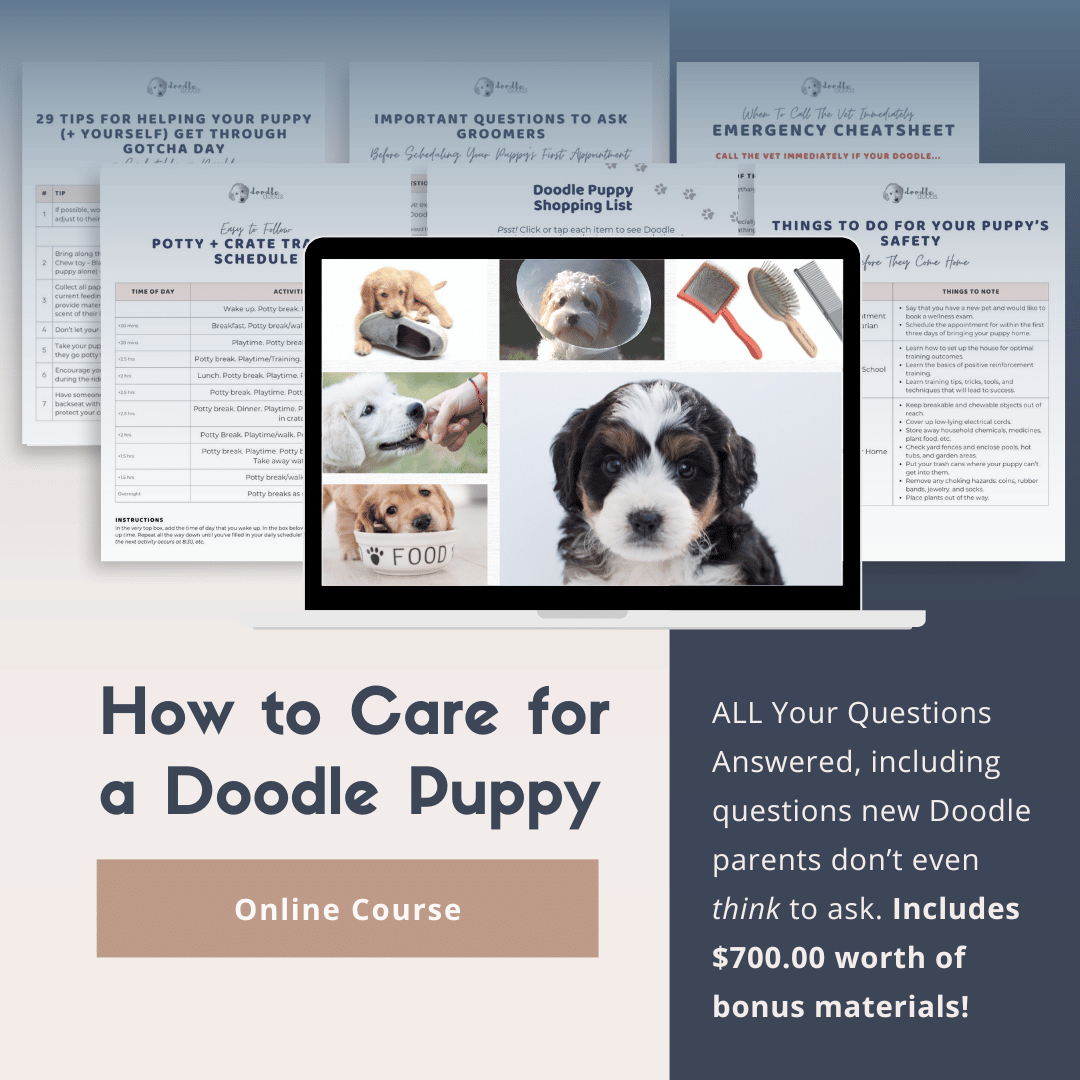
Perfect for first-time Doodle parents, get ALL your questions answered, including questions new Doodle parents don’t even think to ask.
Plus, get $700 worth of Bonus Materials for FREE, including:- Doodle Parenthood Community and Support Group ($190 value)
- Doodle Puppy Growth Tracker ($20 value)
- EMERGENCY Cheatsheet: When To Call The Vet Immediately ($50 value)
- HELP! Button ($145 value)
- And SO MUCH MORE!
